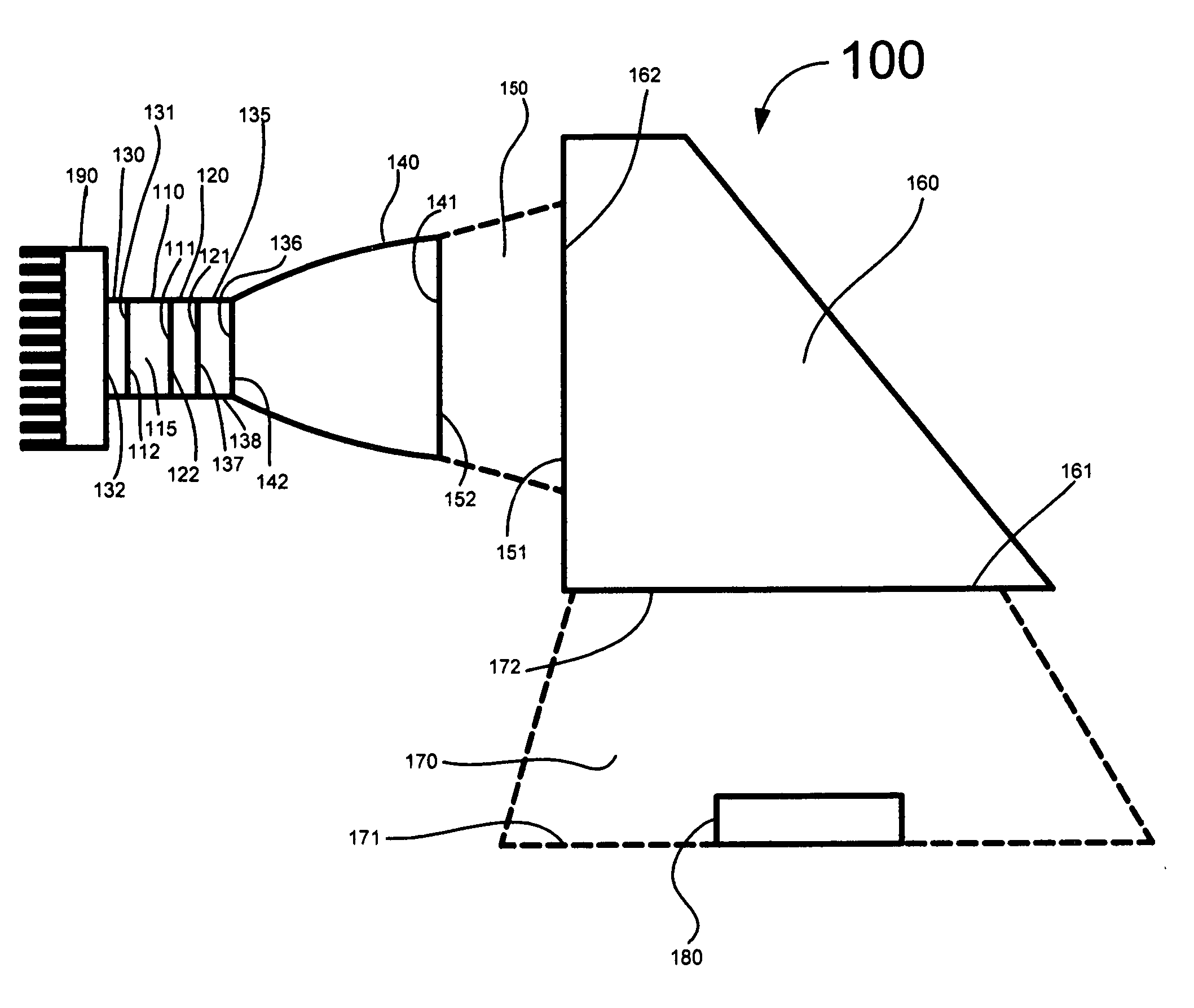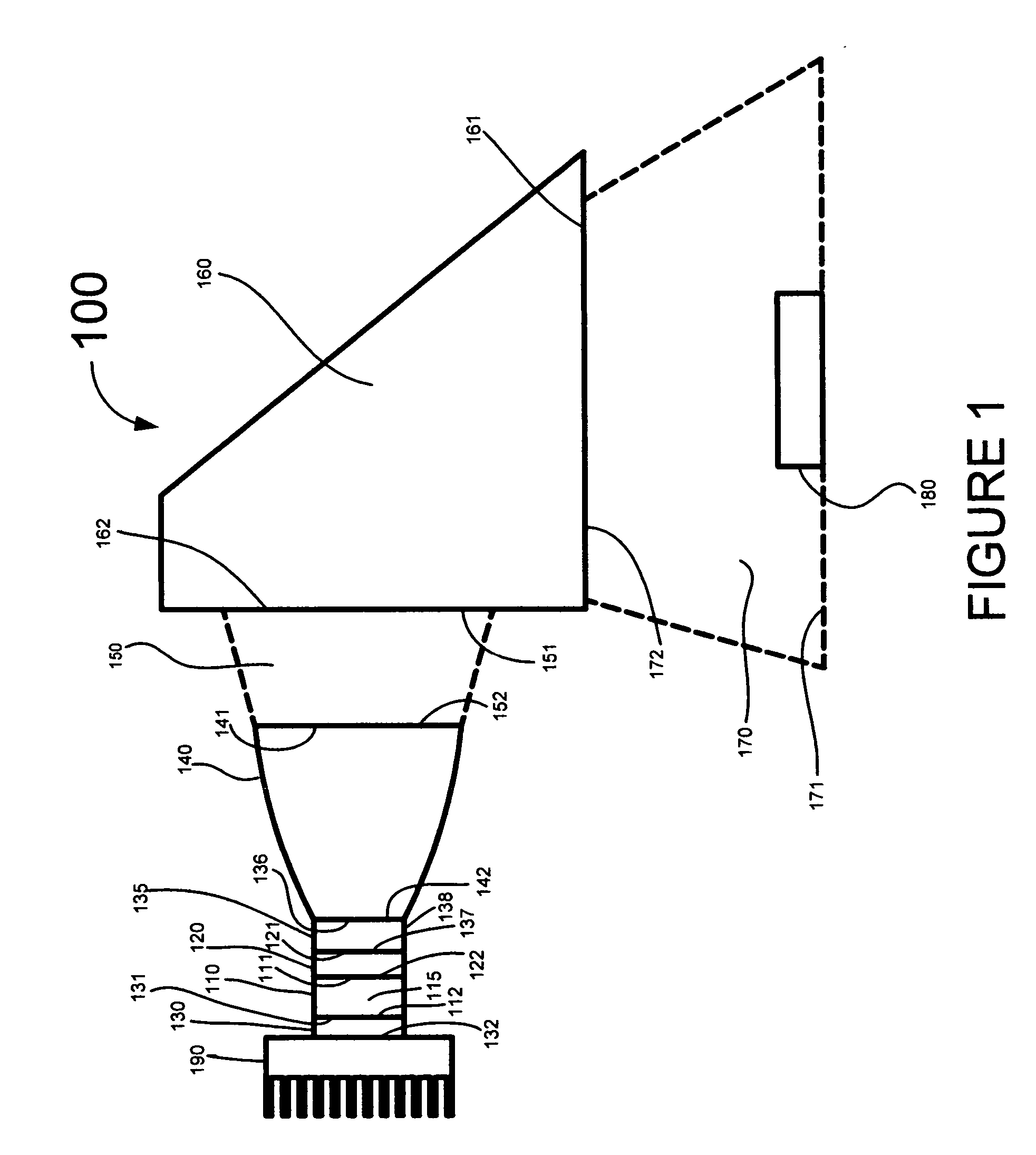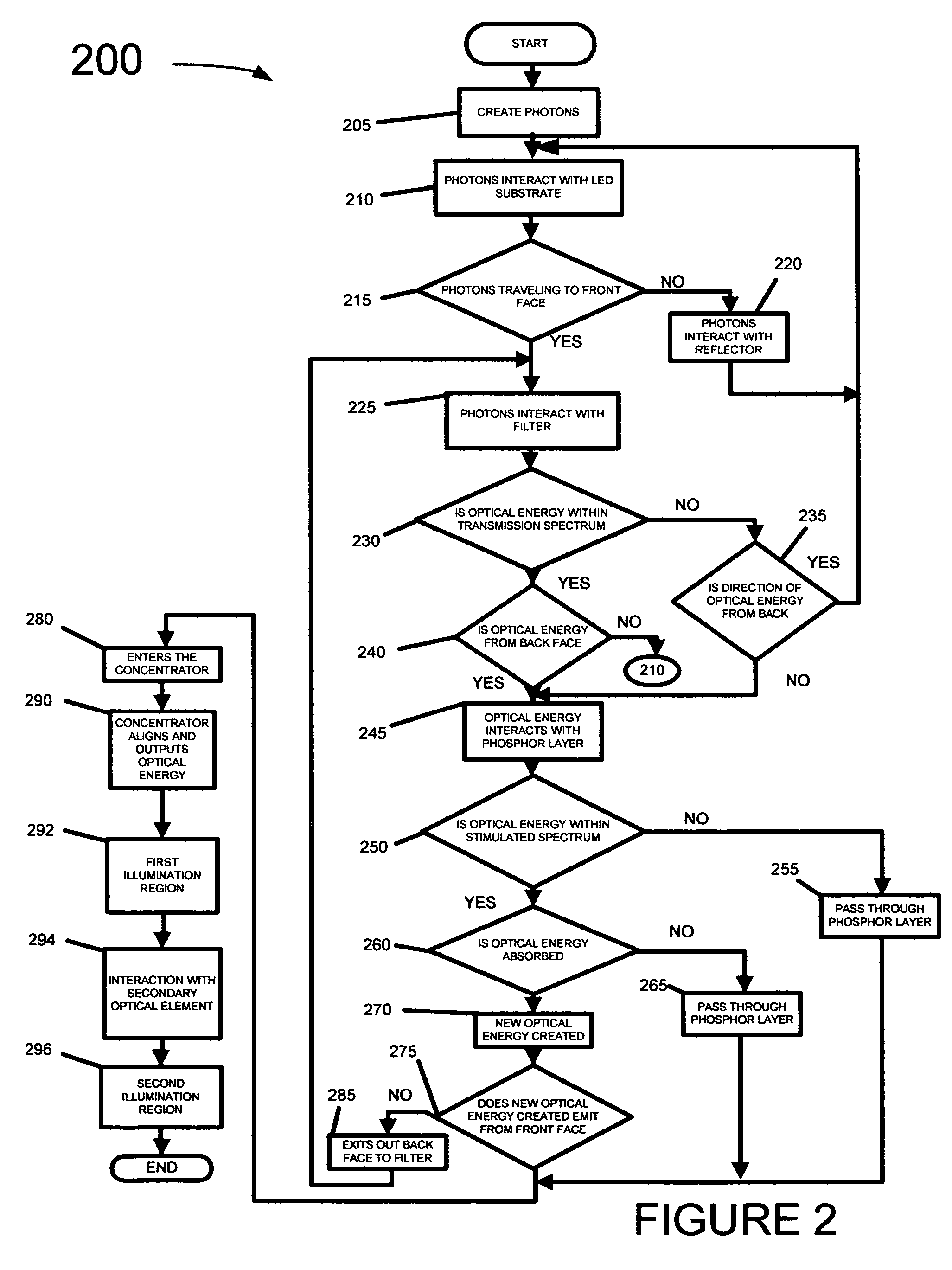LED illuminator with retro reflector
a technology of led illuminator and retro reflector, which is applied in the field of whitelight optical system, can solve the problems of poor intensity, combination of poor cri, poor cct, poor intensity, etc., and achieve the effects of high intensity, reduced package size, and high intensity
- Summary
- Abstract
- Description
- Claims
- Application Information
AI Technical Summary
Benefits of technology
Problems solved by technology
Method used
Image
Examples
example
[0128] Referring to FIG. 1, in a preferred embodiment of the invention, the LED optical source 110 is a combination of two LED optical sources. The first LED optical source 110 is an array of eight CREE Xbright Power Chip LED C470-XB900, which requires 1,125 milliwatts of electric power (i.e., 350 milliamps at 3.5 volts) to produce 150 milliwatts of optical power from each LED for optical energy with a spectral width of 440 nanometers to 480 nanometers and a spectral peak at 460 nanometers. The total optical power for the first LED optical source is therefore 1,350 milliwatts. The first LED optical source represents the stimulated optical energy. The second LED optical source 110 is one Lumileds HWFR-B515, which requires 700 milliwatts of electric power (i.e. 250 milliamps at 2.8 volts) to produce 150 milliwatts of optical power from the LED for optical energy with a spectral width of 620 nanometers to 660 nanometers and a spectral peak at 640 nanometers. The second LED optical sour...
PUM
 Login to View More
Login to View More Abstract
Description
Claims
Application Information
 Login to View More
Login to View More - R&D
- Intellectual Property
- Life Sciences
- Materials
- Tech Scout
- Unparalleled Data Quality
- Higher Quality Content
- 60% Fewer Hallucinations
Browse by: Latest US Patents, China's latest patents, Technical Efficacy Thesaurus, Application Domain, Technology Topic, Popular Technical Reports.
© 2025 PatSnap. All rights reserved.Legal|Privacy policy|Modern Slavery Act Transparency Statement|Sitemap|About US| Contact US: help@patsnap.com



